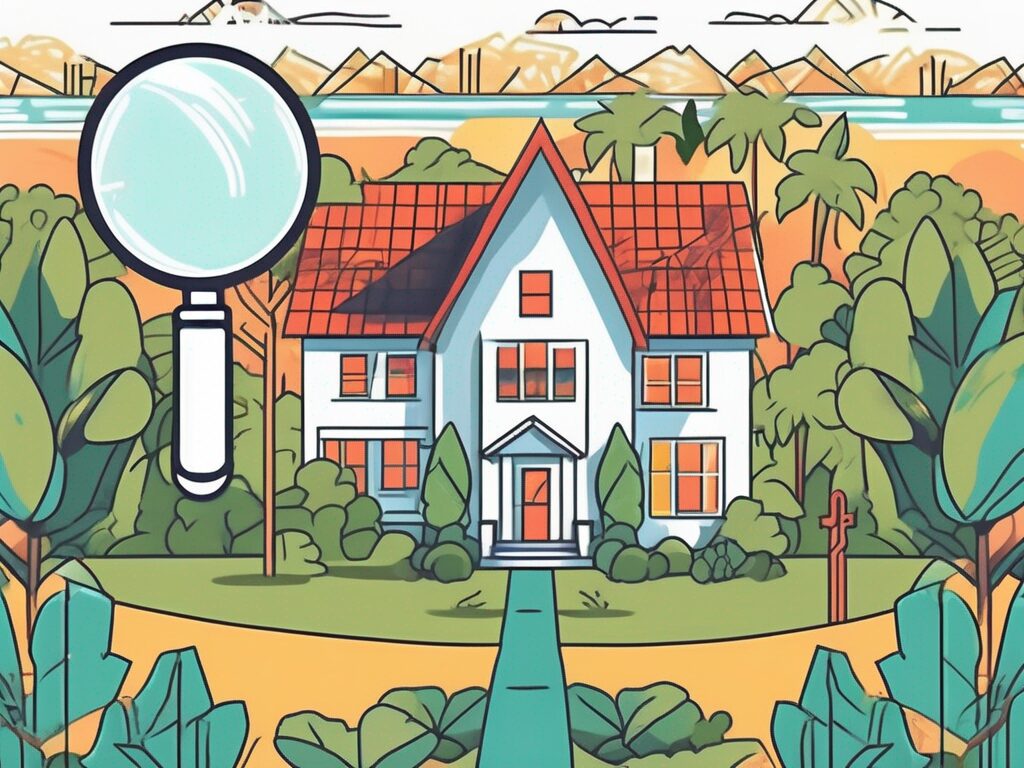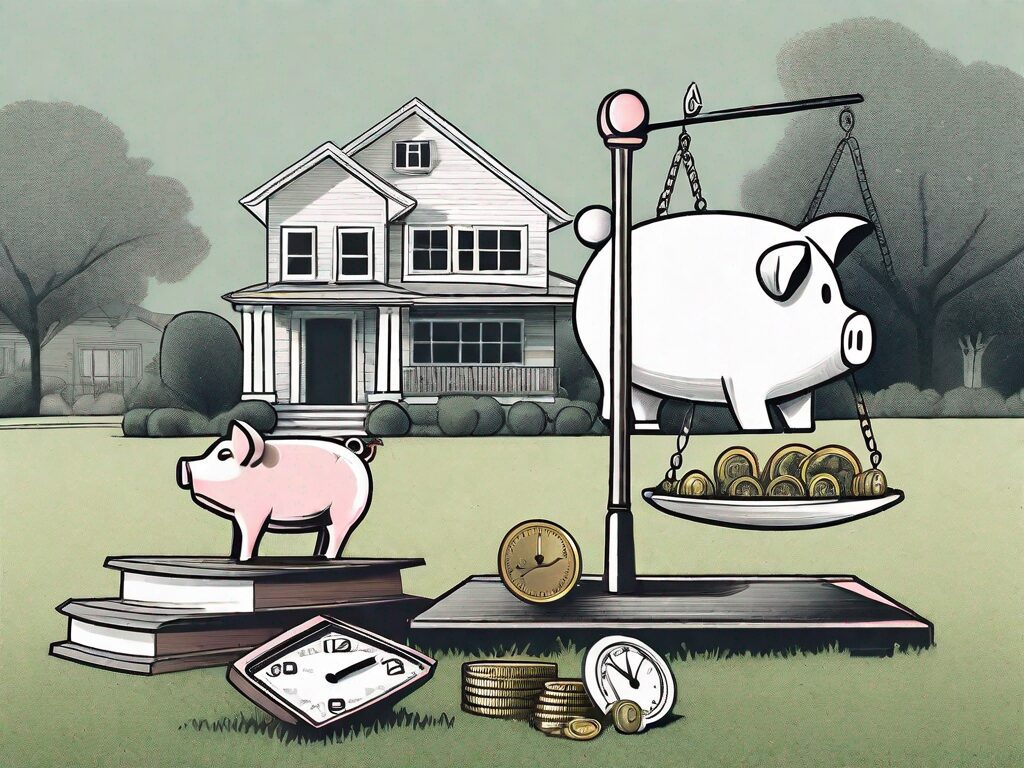
Agent A-Team or Solo Superhero? Finding the Right Real Estate Partner for Your Selling Journey in Wildwood Florida
When it comes to selling your home in Wildwood, Florida,…
January 29, 2024
In today’s real estate market, there are various options available for homebuyers looking to find their dream home. One such option is purchasing a bank-owned home, also known as a real estate owned (REO) property. Bank-owned homes are properties that have been repossessed by lenders due to the previous owner’s inability to make mortgage payments. While this might sound like a daunting prospect, it’s essential for homebuyers to understand the pros and cons of buying a bank-owned home before making such a significant investment.
Bank-owned homes typically go through a foreclosure process, which occurs when the homeowner defaults on the mortgage payments. This unfortunate situation can happen due to various reasons such as financial hardships, job loss, or unexpected medical expenses. Once the foreclosure process is complete, the lender takes ownership of the property.
Bank-owned properties come in a variety of shapes and sizes, ranging from single-family homes to multi-unit buildings. These homes are then classified as bank-owned properties and are often sold through public auctions or listed with real estate agents. Potential buyers can find a wide range of options, from fixer-uppers to move-in ready homes, in the bank-owned property market.
When purchasing a bank-owned home, it’s crucial to familiarize yourself with the processes and requirements involved. Unlike traditional home purchases, bank-owned properties often have their own set of rules and conditions that buyers must follow. These conditions are put in place to protect the interests of both the buyer and the lender.
One important aspect to consider when buying a bank-owned property is the potential need for repairs. Since these homes have gone through the foreclosure process, they may have been neglected or suffered from lack of maintenance. It’s essential to thoroughly inspect the property and assess any necessary repairs before making an offer.
Additionally, bank-owned properties often come with strict timelines. Buyers may be required to submit offers within a specific timeframe and provide proof of financing or pre-approval. These timelines are designed to ensure a smooth and efficient transaction process.
Furthermore, negotiation flexibility may be limited when purchasing a bank-owned home. Unlike traditional home sales, where buyers and sellers can negotiate on various terms, bank-owned properties often have set prices and conditions that are non-negotiable. This is because the lender aims to recover as much of their investment as possible.
Despite these unique considerations, purchasing a bank-owned home can offer potential buyers an opportunity to find a property at a lower price compared to the market value. With careful research, due diligence, and the guidance of a knowledgeable real estate agent, buyers can navigate the world of bank-owned properties and find a home that meets their needs and budget.
One of the primary advantages of buying a bank-owned home is the potential for a great investment opportunity. These properties can often be purchased at a lower price compared to other homes on the market. Banks are typically motivated to sell these properties quickly, making them more open to negotiation. This affordability can allow buyers to secure a property in a desirable location that may have otherwise been unattainable.
When it comes to investing in real estate, bank-owned homes can be a smart choice. Not only do they offer the potential for a good return on investment, but they also come with several other advantages. For example, these properties are often sold “as-is,” meaning that buyers have the opportunity to purchase a home at a discounted price and then make repairs or renovations to increase its value. This can be especially appealing to buyers who have the skills and resources to take on such projects.
Furthermore, buying a bank-owned home can provide buyers with a sense of security. Since these properties have gone through the foreclosure process, they are typically free of any liens or encumbrances. This means that buyers can have peace of mind knowing that they are purchasing a property with a clean title, without any hidden legal issues.
Aside from the financial benefits, buying a bank-owned home can offer several other advantages. For instance, these properties are typically vacant, which means that buyers can move in quickly without having to wait for the previous occupants to relocate. This can be particularly advantageous for those who are in need of a new home urgently or want to avoid the hassle of dealing with tenants.
Moreover, bank-owned homes often present buyers with an opportunity to customize the property to their liking. Since these properties usually require repairs or renovations, buyers can take advantage of this situation to personalize the home according to their preferences. Whether it’s updating the kitchen, adding a fresh coat of paint, or completely redesigning the layout, buyers have the freedom to transform the property into their dream home.
Another advantage of purchasing a bank-owned property is the potential for future appreciation. While the initial purchase price may be lower than market value, buyers can benefit from the property’s appreciation over time. As the real estate market improves and the neighborhood develops, the value of the bank-owned home can increase significantly, providing buyers with a profitable investment in the long run.
In conclusion, buying a bank-owned home offers numerous advantages beyond the financial benefits. From the potential for a great investment opportunity to the ability to customize the property, these homes can be a smart choice for buyers looking to make a wise investment and create a home tailored to their preferences. So, if you’re in the market for a new home, consider exploring the world of bank-owned properties and unlock the potential for a rewarding real estate venture.
While purchasing a bank-owned home can be enticing, it’s essential to consider some potential drawbacks. These properties are typically sold as-is, meaning that buyers are responsible for any needed repairs or maintenance. It’s crucial to thoroughly inspect the property before making an offer and factor in the potential cost of renovations when determining the overall value.
When it comes to buying a bank-owned home, there are several considerations that potential buyers should keep in mind. One of the main drawbacks is the condition of the property. Since these homes are sold as-is, there is no guarantee that they are in good shape. Buyers should be prepared to invest time and money into repairs and renovations to bring the property up to their desired standards.
Additionally, the competition for bank-owned homes can be fierce. These properties often attract multiple buyers due to their lower price point, which can lead to bidding wars. It’s essential to be prepared and have realistic expectations when entering the negotiation process. Buyers should be ready to act quickly and make competitive offers to increase their chances of securing the property.
Furthermore, the purchasing process for bank-owned homes can be more complex compared to traditional home purchases. Buyers may encounter additional paperwork and potentially longer closing times. It’s important to be patient and work closely with a real estate agent or attorney who has experience in handling bank-owned property transactions.
Another challenge when buying a bank-owned home is the potential for hidden issues. Since these properties are often sold without any warranties or guarantees, buyers may discover unforeseen problems after the purchase. It’s crucial to conduct a thorough inspection and consider hiring professionals, such as home inspectors or contractors, to assess the property’s condition before finalizing the deal.
Moreover, bank-owned properties may have a complicated history. They could have been involved in legal disputes or have outstanding liens or judgments against them. Buyers need to conduct a comprehensive title search and review all relevant documents to ensure that there are no legal complications that could affect their ownership rights.
Lastly, financing a bank-owned home can sometimes be challenging. Traditional mortgage lenders may be hesitant to provide loans for properties in poor condition or with uncertain histories. Buyers may need to explore alternative financing options or work with specialized lenders who are familiar with the unique challenges of purchasing bank-owned homes.
If you decide to explore the possibility of purchasing a bank-owned home, there are specific steps you should take. Start by researching available resources to find listings of bank-owned properties in your desired area. Real estate websites, local newspapers, and foreclosure-specific listings can all be valuable sources of information. Additionally, consider working with a real estate agent who specializes in bank-owned homes. Their expertise can help streamline the process and ensure that you find the right property for your needs.
Once you have identified potential bank-owned properties, it’s important to conduct thorough research on each one. This includes gathering information on the property’s history, such as previous owners, any liens or encumbrances, and the reason for foreclosure. Understanding the background of the property can give you valuable insights into its condition and potential challenges.
Furthermore, it’s crucial to visit the neighborhood where the bank-owned property is located. Take the time to explore the area, assess the amenities, and get a feel for the community. This will help you determine if the location aligns with your lifestyle and preferences.
When navigating the bank-owned home buying process, it’s important to be well-prepared. Begin by obtaining a mortgage pre-approval to determine your budget and strengthen your offer. This will not only give you a clear understanding of how much you can afford, but it will also demonstrate to the bank that you are a serious buyer.
Thoroughly inspecting the property is another crucial step in the process. While bank-owned homes are typically sold “as-is,” it’s important to know what you’re getting into. Consider hiring professionals, such as home inspectors and contractors, to assess any necessary repairs or renovations. This will help you estimate the potential costs involved and make an informed decision.
Additionally, be patient and diligent throughout the process. Buying a bank-owned home may take longer than a traditional home purchase due to the additional paperwork and negotiations involved. It’s important to stay organized and maintain open communication with the bank and any other parties involved.
Lastly, ensure you have a contingency plan in case the deal falls through or unexpected challenges arise. This could include having alternative financing options or backup properties in mind. Being prepared for any potential setbacks will help you navigate the process with confidence.
Overall, buying a bank-owned home can offer both advantages and disadvantages for homebuyers. On the positive side, these properties are often priced below market value, allowing buyers to potentially get more for their money. However, there may also be risks involved, such as hidden repairs or liens on the property.
Before making a decision, it’s crucial to weigh these factors carefully and consider your own financial situation, goals, and tolerance for potential risks. By understanding the ins and outs of purchasing a bank-owned property, you can make an informed decision and find the home that fits your needs and budget.

If you want the Richr team to help you save thousands on your home just book a call.
 Book a call
Book a call